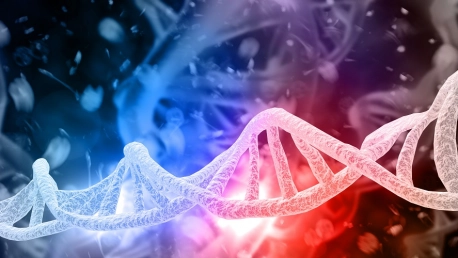Gene therapy is a medical field that focuses on developing personalized treatments that have the potential to save or change lives by inactivating a defective gene or replacing it with a functional one. As AI has already proven its ability to impact healthcare positively, this emerging technology could also prompt important advancements in gene therapy. Furthermore, viral vector-based gene therapies have become a reality in recent years. In light of these technological and scientific breakthroughs, the biopharmaceutical industry must recalibrate its development of therapies that go beyond the traditional approach to treating disease.
In this article, we take a closer look at how gene therapy has evolved over the past decades, and how recent technological and scientific advances may help this medical field cure various diseases in the future.
A Brief History of Gene Therapy
Gene therapy refers to using genetic material with the goal of treating, preventing, or possibly curing diseases by replacing, inactivating, or introducing genes into cells. This can be done either inside (in vivo) or outside (ex vivo) a patient’s body.
The term “gene therapy” was introduced five decades ago, in 1972. Abnormal gene expression or the expression of genes that contain harmful mutations are two of the most important factors that lead to genetic diseases. Not for nothing, scientists believed that, by correcting certain DNA defects, gene therapy had the potential to reverse inherited diseases. The idea was initially met with scientific and ethical uncertainty and criticism, until 1989, when the first successful nuclear gene transfer in humans, approved by the National Institutes of Health (NIH), was performed. The study demonstrated the feasibility and safety of retroviral gene transduction and the potential use of lymphocytes for gene therapy of various diseases.
Since then, researchers have developed several methods to correct or influence the way genes function, and have used these techniques to develop therapies for degenerative eye and muscle diseases and different blood disorders. Gene therapy experienced a resurgence in the early 2010s when researchers in Pennsylvania and Maryland independently presented results of trials for the treatment of leukemia or lymphoma. In recent years, an increasing number of treatments have been approved in the US.
AI Can Accelerate R&D in Gene Therapy
Given the recent wider deployment of AI in healthcare and biopharma, the innovations this technology could bring to gene therapy can be significant. The field is maturing rapidly and has received an influx of talent and venture capital in recent years, and further evidence of its applicability and scalability is expected. However, while this medical field holds great potential, innovation is still needed. According to McKinsey, there is a significant untapped opportunity in the industry to scale AI in gene therapy.
Despite some challenges, AI can accelerate R&D processes and lead to significant advances in gene therapy.
Generating and Analyzing Experimental Data
Considering the novelty of gene therapy, experimental data are still limited, and generating them is usually very expensive and time-consuming. The context and methodology of AI and ML applications in data generation and analysis vary, with some approaches leading to faster results and lower costs. Training more complex AI systems in this regard might prove challenging. Still, ML is a suitable technology that can help explore and leverage data, thus saving time and avoiding unnecessary, costly experiments.
Managing Functional Complexity
Because of its complexity, gene therapy R&D presents a potentially wide range of solutions. Establishing an accurate relationship between the sequence (DNA, RNA, or amino acid), its structural properties, and the observed functional behavior can be challenging. Given the multiple levels of complexity, AI and ML offer the opportunity to overcome these limitations, understand the drivers of experimental performance or even develop new designs.
Viral Vector Gene Therapy
In recent years, gene therapies based on viral vectors have become a reality. The US Food and Drug Administration (FDA) has approved more than twenty therapies. Most of the early viral vector-based products were developed within rare conditions, but the increasing demand has led to the rapid development of viral vector manufacturing to meet other requirements, including the treatment of more common diseases.
The broader application of viral vector-based gene therapies to more common conditions requires higher yields and a lower cost of goods sold (COGS). Large contract development and manufacturing organizations (CDMOs) have invested heavily in this in recent years with a series of major acquisitions. But this rapid influx of money and new technologies still need to solve the challenges of viral vector manufacturing. The manufacturing is not yet standardized across the industry, and biopharma companies use different production systems and downstream processes. While it is likely that several processes will converge over time and become standardized across the industry, it will be critical for companies seeking regulatory approval and patient access to make the right decisions early on.
The manufacturing of viral vector gene therapy products is likely to increase and the number of approved therapies is expected to grow, providing valuable help to patients and new revenue streams for biopharmaceutical companies.
Conclusion
Gene therapy has immense potential to treat, prevent, and even cure diseases by replacing, inactivating, or introducing genes into cells. It is abundantly clear that the future of gene therapy is promising, and the possibility of treating many genetic disorders is within reach. Significant investments and scientific and technological advances have already been made in this field, but its full potential has yet to be realized.









